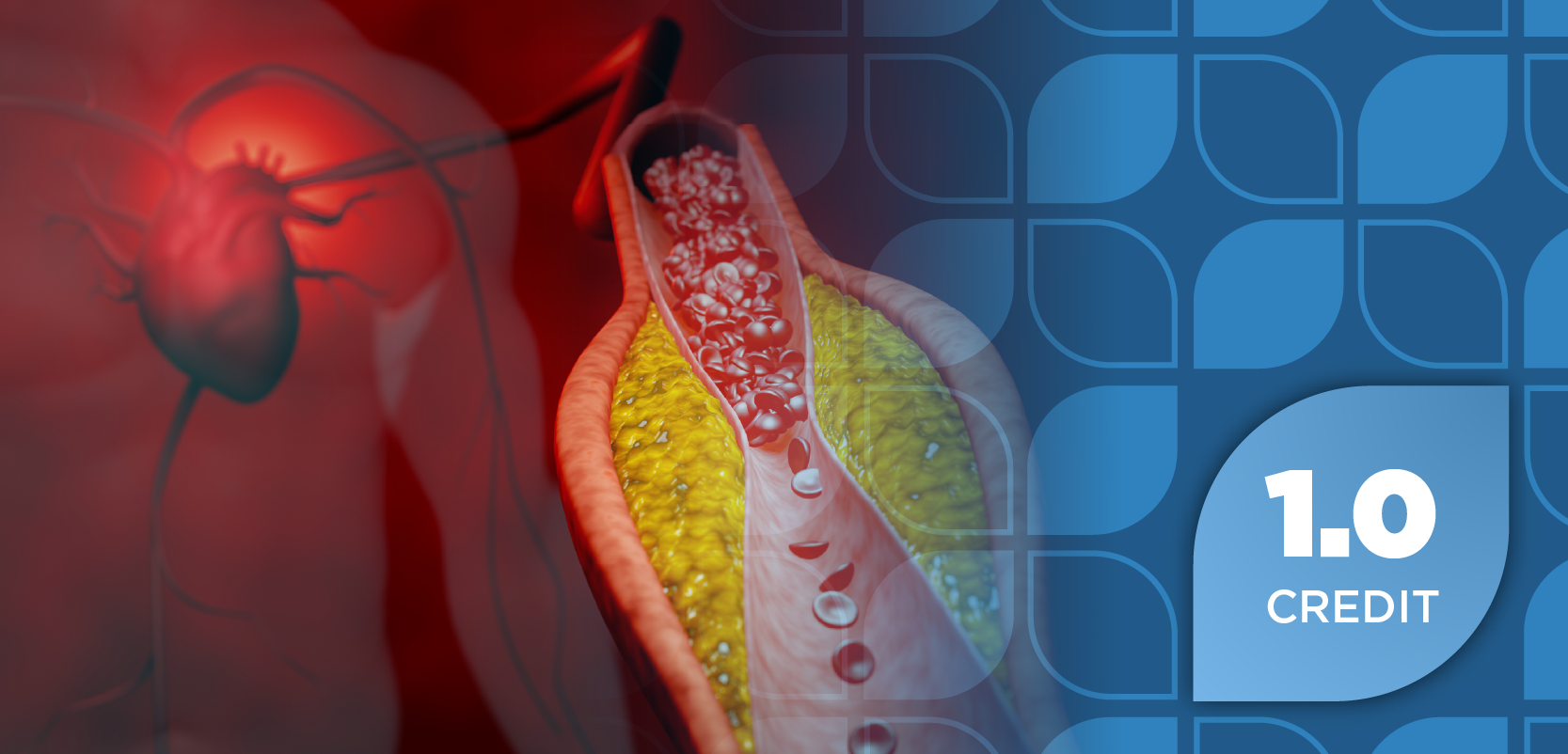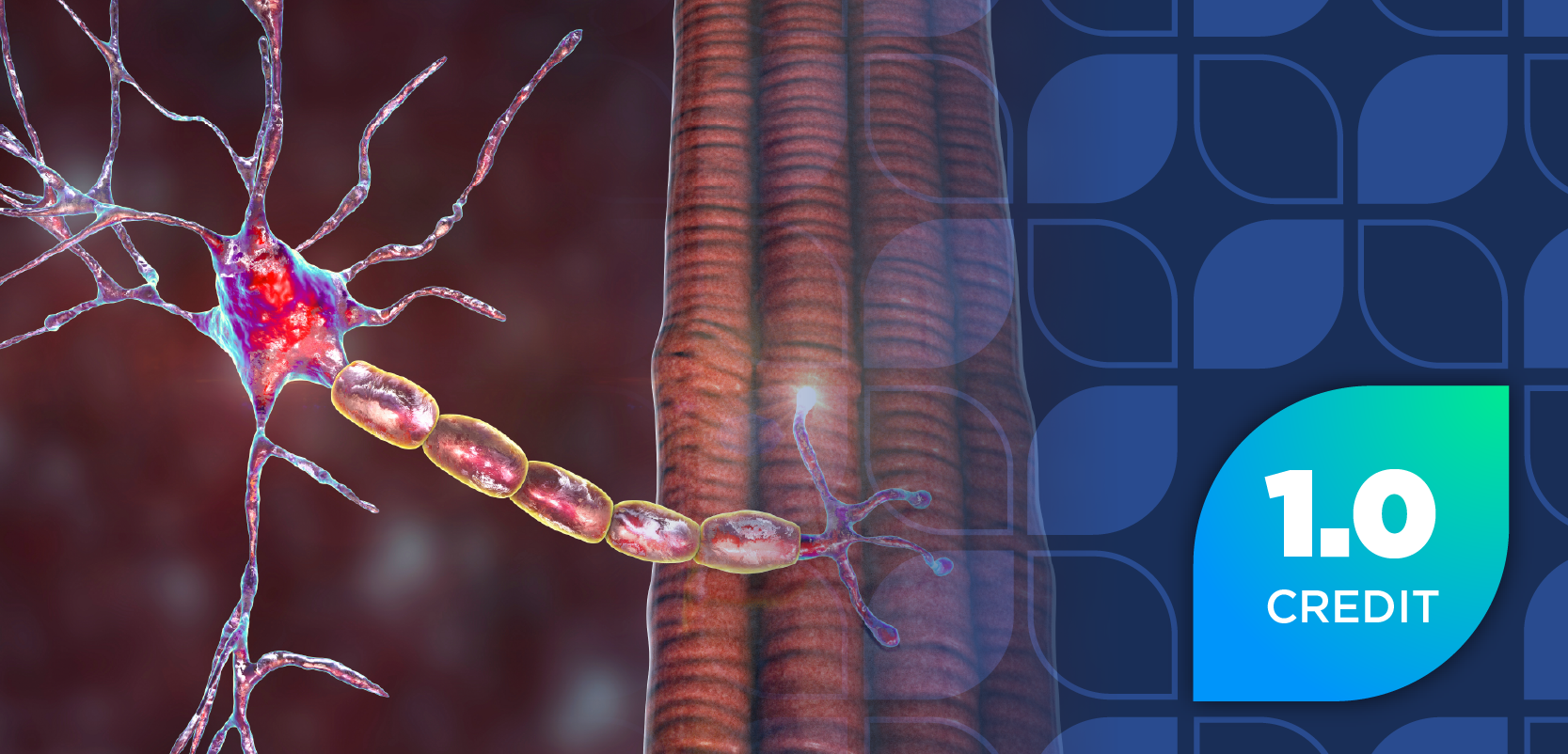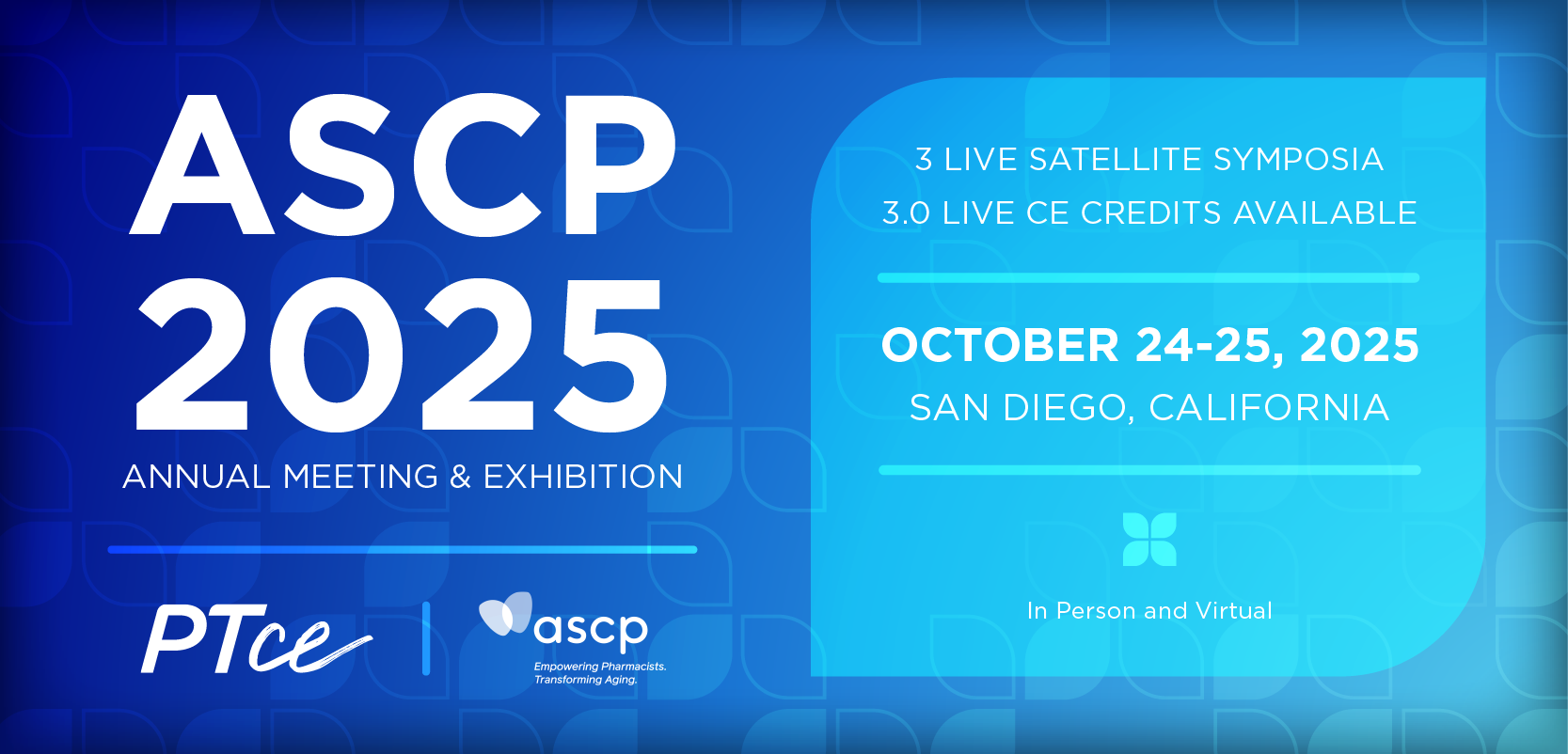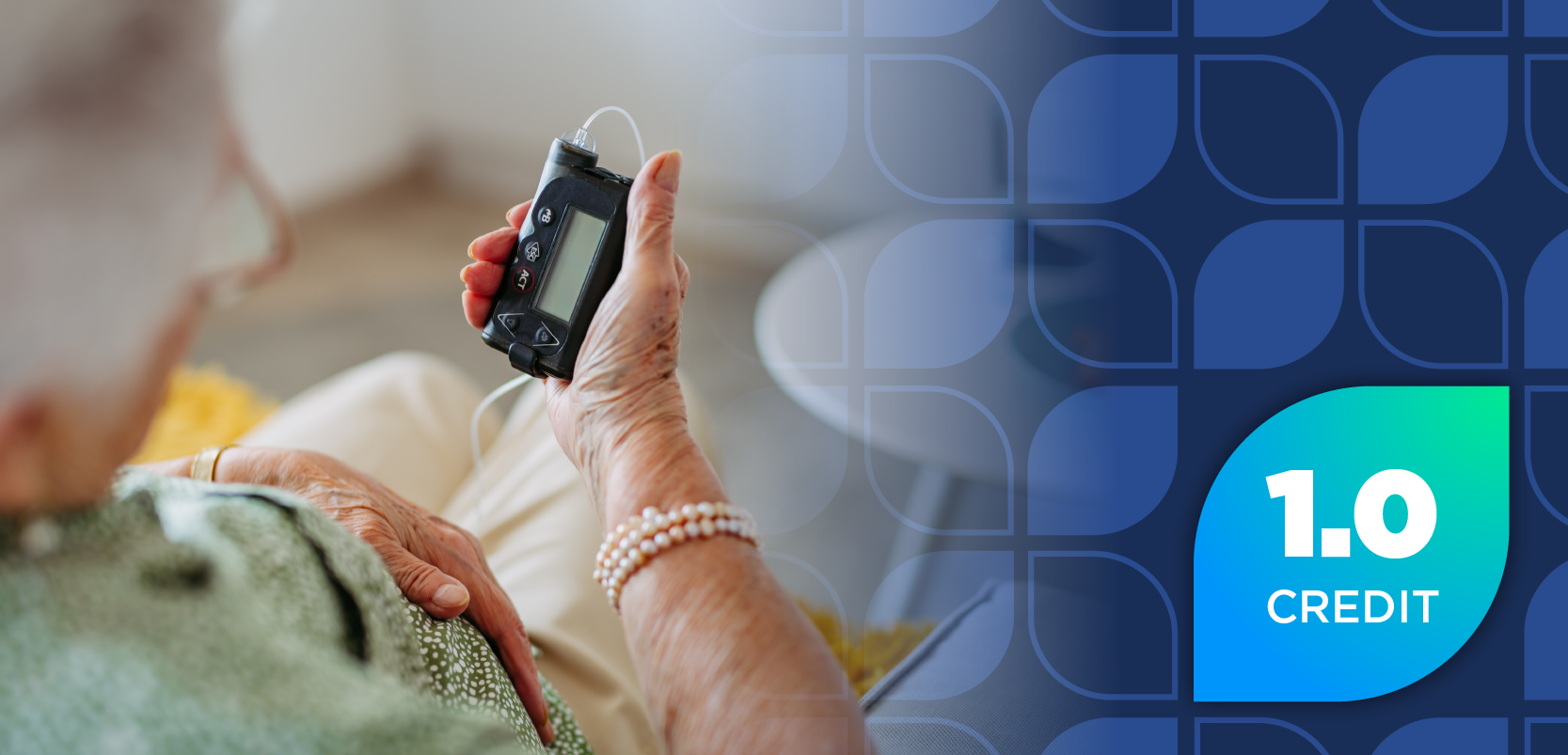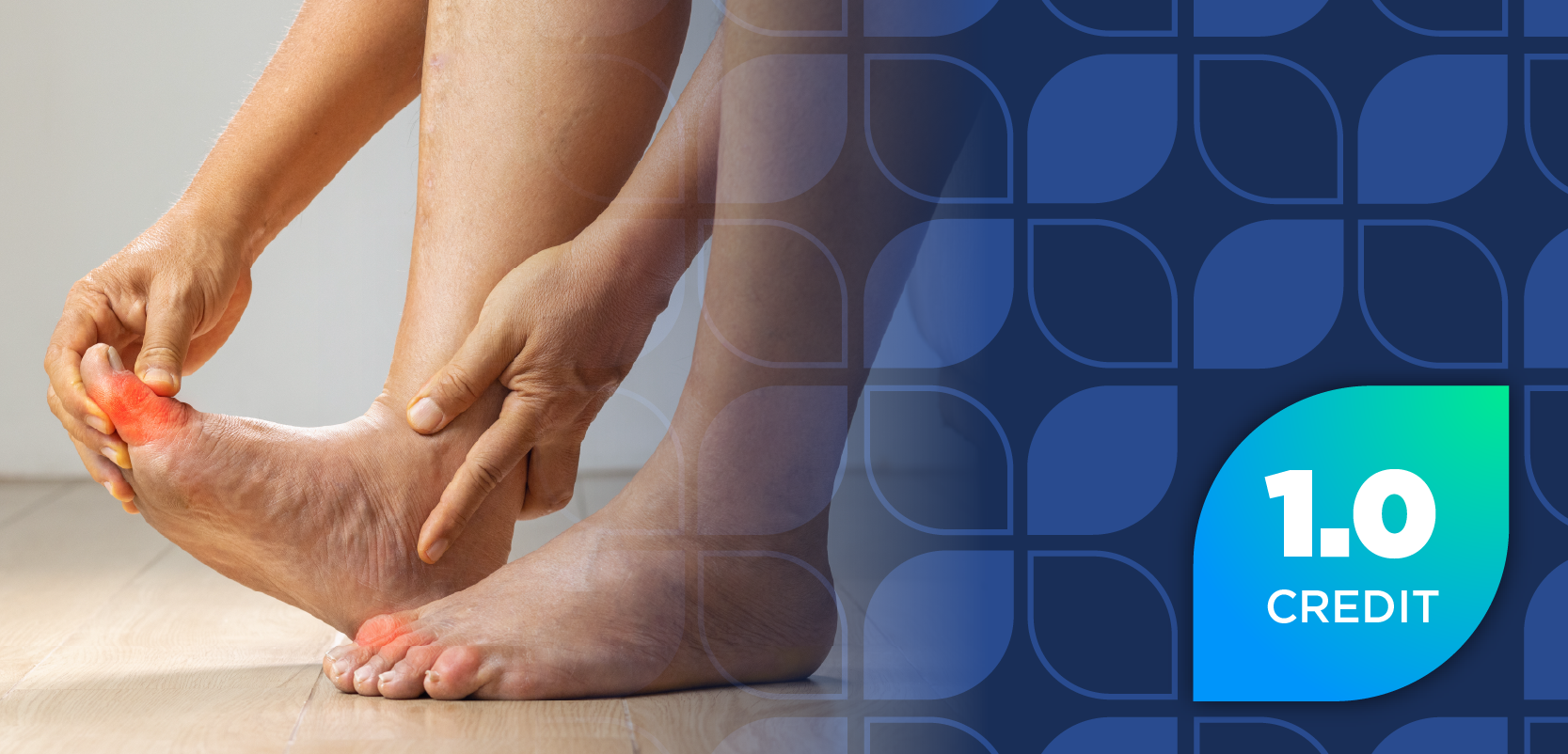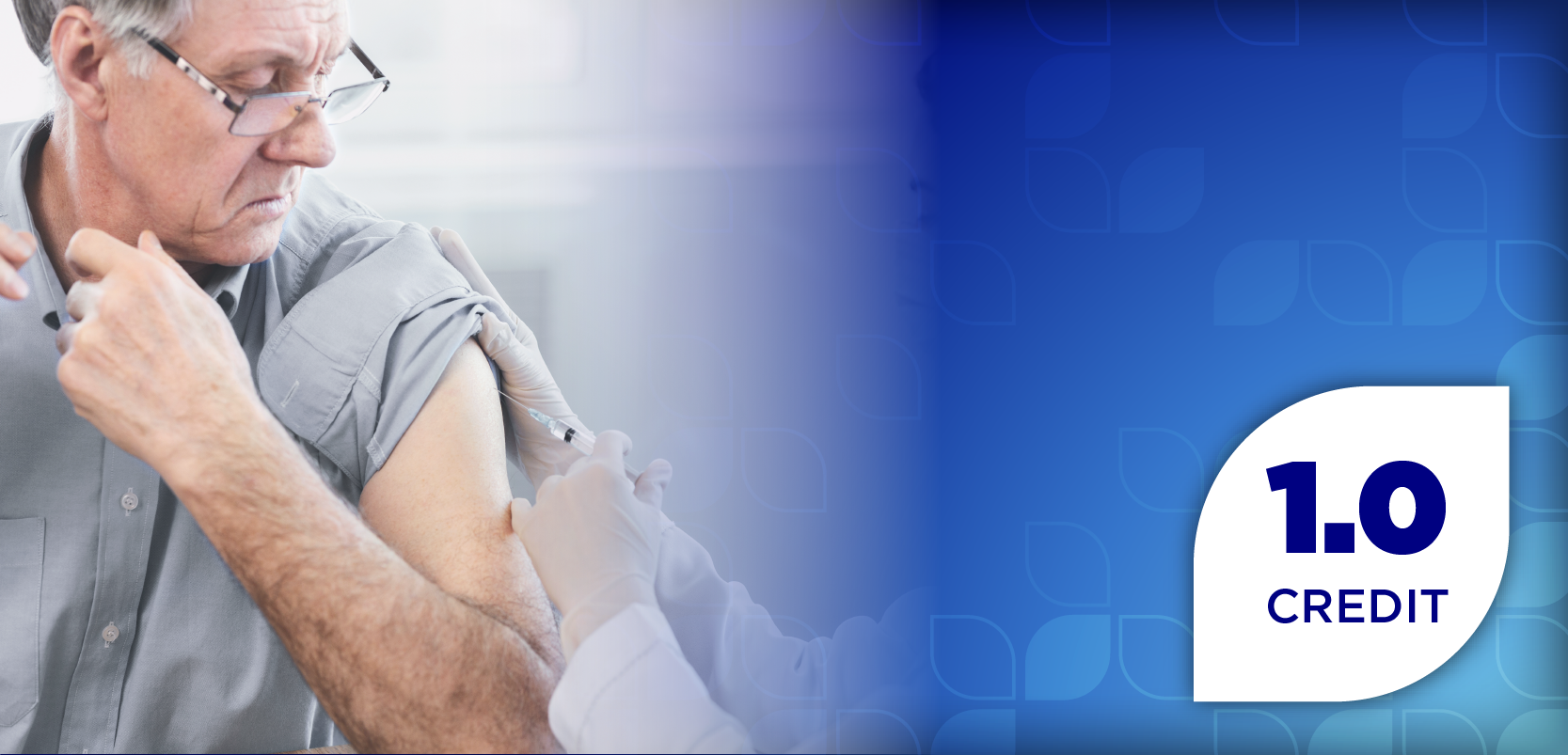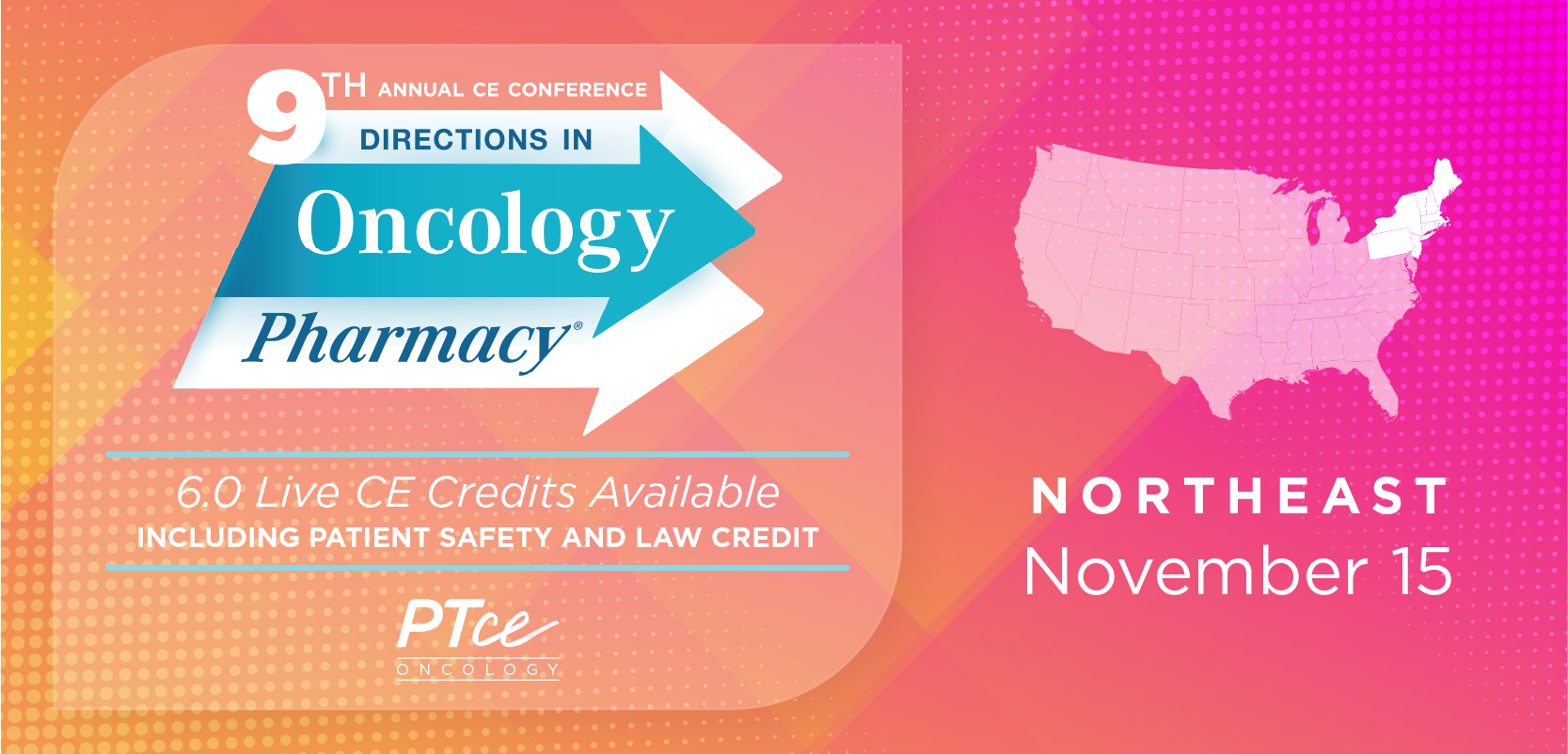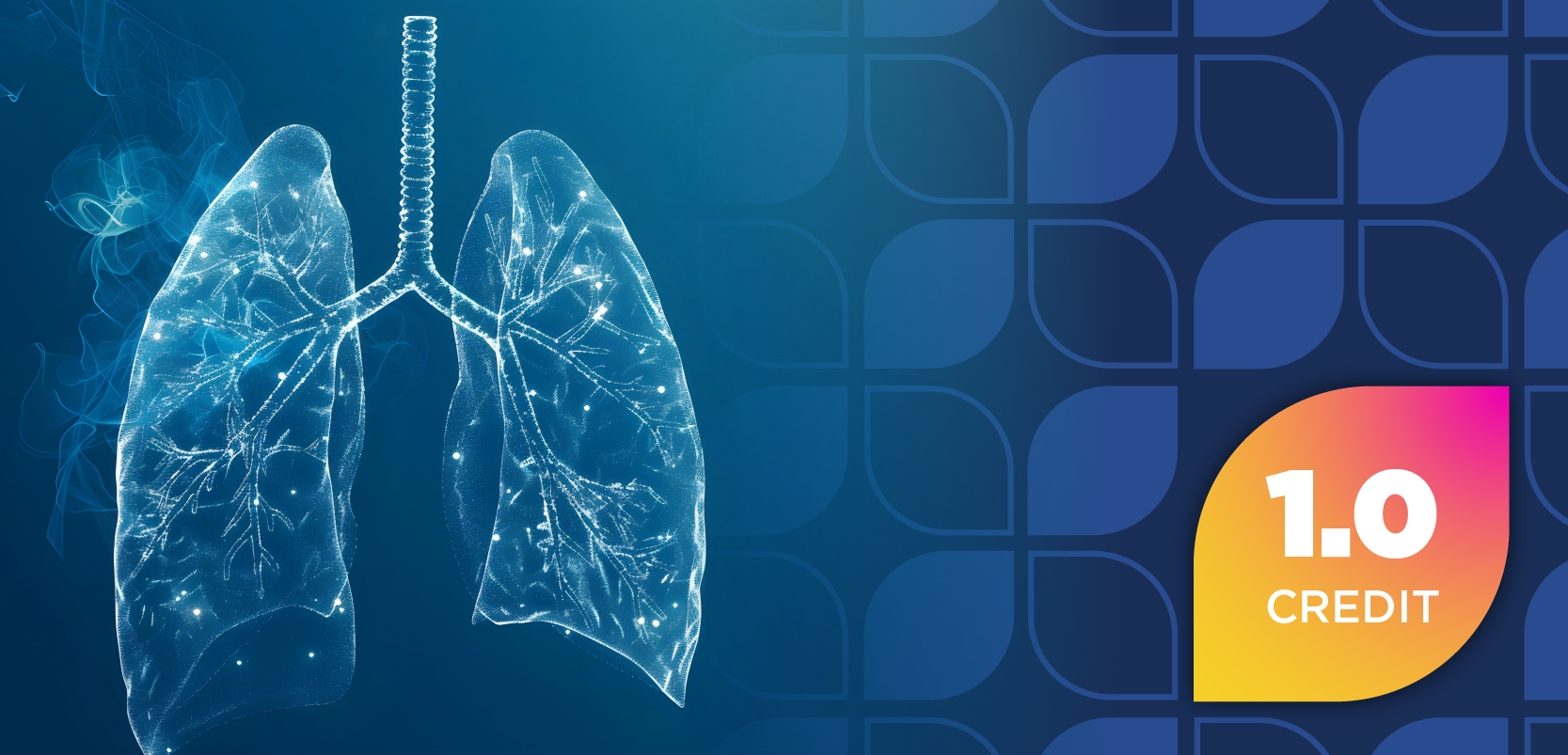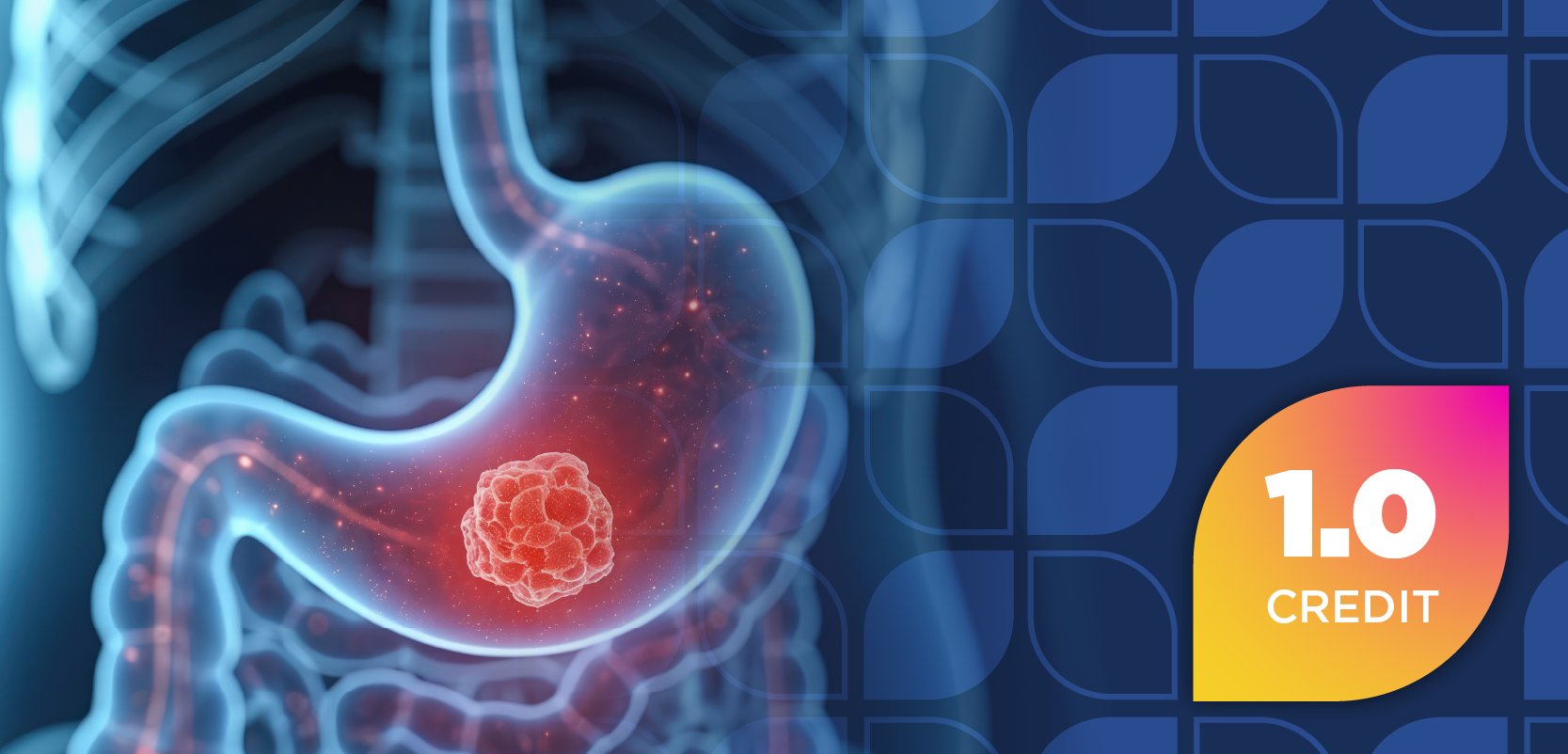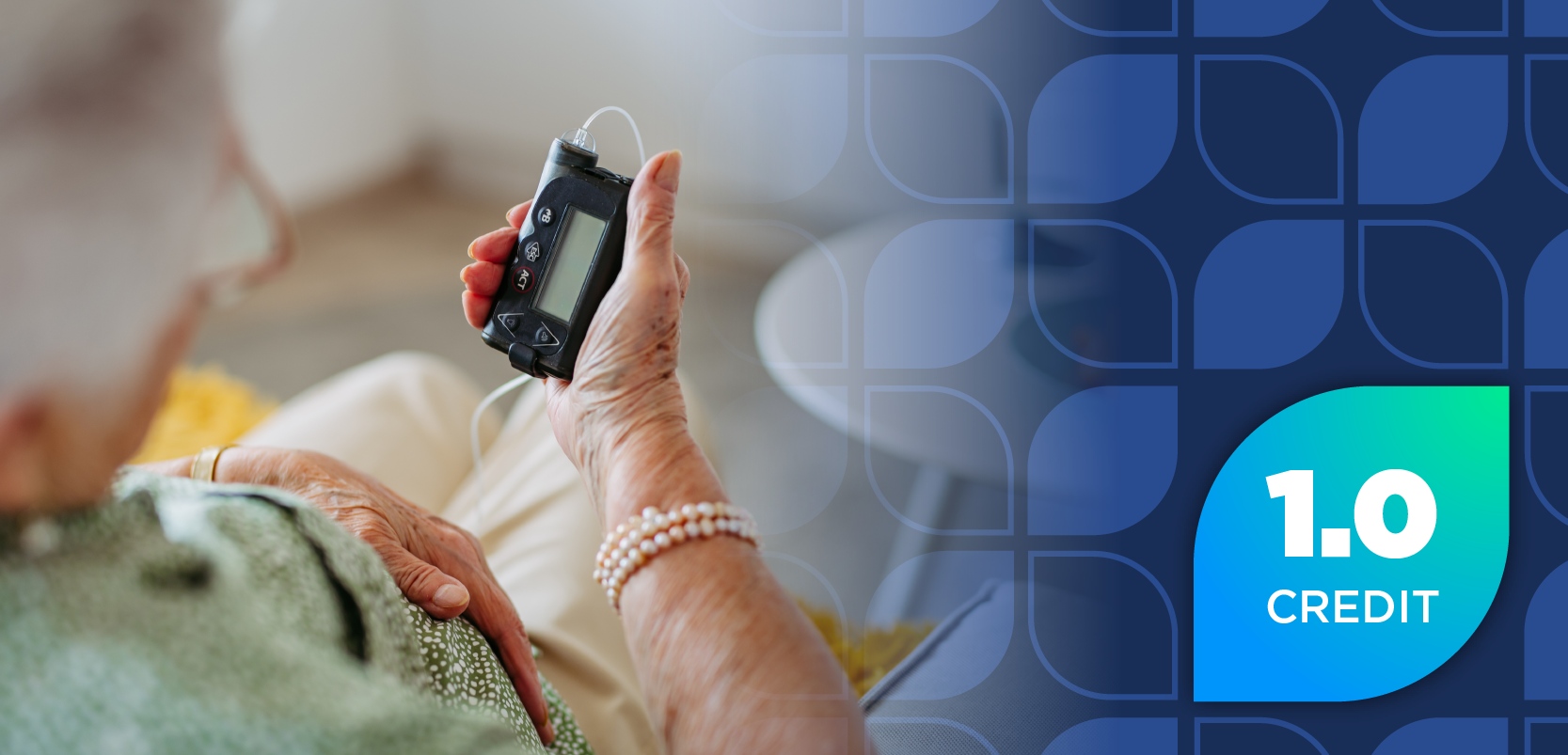Pharmacy Practice in Focus: Oncology
- October 2025
Axatilimab: A New Frontier for Steroid-Refractory Chronic GVHD
Key Takeaways
- Axatilimab targets CSF-1R, reducing proinflammatory and profibrotic monocytes, addressing both inflammation and fibrosis in cGVHD.
- The AGAVE-201 trial showed a 74% overall response rate for axatilimab in heavily pretreated cGVHD patients.
Chronic graft-vs-host disease (cGVHD) is the leading cause of late, non-relapse mortality for patients who have undergone an allogeneic hematopoietic stem cell transplant. Axatilimab, which has durable responses and an attractive safety profile, offers a novel mechanism of action for the treatment for patients who have not succeeded with at least 2 prior lines of systemic therapy.
Introduction
Allogeneic hematopoietic cell transplantation (allo-HCT) is a curative therapy for many malignant and nonmalignant hematologic disorders in adult and pediatric patients. However, chronic graft-vs-host (cGVHD) disease, a complication that arises after allo-HCT, remains one of the leading causes of late, non-relapse mortality. Patients with cGVHD have increased morbidity, poor quality of life, and increased resource utilization, resulting in higher health care costs.1,2 The incidence of cGVHD occurs in approximately 40% to 70% of patients following allo-HCT, with key risk factors including the degree of human leukocyte antigen disparity, increasing age of recipient, use of peripheral blood stem cells as the stem cell source, myeloablative conditioning regimens, prior acute GVHD, and female donor to male recipient.3
cGVHD is a multisystem disorder that most commonly occurs approximately after 100 days of transplant, and its severity is graded based on the 2014 National Institutes of Health (NIH) criteria.4 Although any organ system may be involved, the most frequently involved organs include skin, eyes, mouth, gastrointestinal (GI) tract, and liver. The pathophysiology of cGVHD is still not fully understood, but it can be broken into 3 distinct phases. For the initiation and development of cGVHD, early inflammation and tissue injury is involved (phase 1). This is followed by chronic inflammation and dysregulated immunity (phase 2) and then aberrant tissue repair, often with fibrosis (phase 3).5
Although first-line cGVHD therapy consists of corticosteroids, approximately half of patients will experience steroid-dependent or steroid-refractory disease, requiring additional treatment. There are 4 FDA-approved agents for the treatment of steroid-dependent or steroid-refractory cGVHD, with a number of therapies used off-label, such as extracortical photopheresis (ECP), IL-2, abatacept (Orencia; Bristol Myers Squibb), imatinib (Gleevec; Novartis), tacrolimus (Prograf; Astellas Pharma), sirolimus, and mycophenolate mofetil with varying degrees of efficacy. Therapy selection comes down to organ-specific response rates, time to response, route of administration, and adverse events (AEs).6
In 2017, the FDA approved ibrutinib (Imbruvica; AbbVie Inc), the first oral therapy for patients who had not succeeded with at least 1 prior line of therapy.7 The approval was based on results from the PCYC-1129-CA study (NCT02195869), which had an overall response rate (ORR) of 67% and a median time to response of approximately 12 weeks. Organs with the highest response rates included the skin, mouth, and GI tract.8-10 In 2021, both ruxolitinib (Jakafi; Incyte Corp) and belumosudil (Rezurock; Kadmon Pharmaceuticals Inc) gained FDA approval for patients with cGVHD.11,12
Ruxolitinib is approved for patients who have not succeeded with at least 1 prior line of systemic therapy. The approval was based on results from the phase 3 REACH3 trial (NCT03112603), which had an ORR of 50% and a median time to response of 3 weeks. However, myelosuppression often limits continued use even though it is one of the most commonly used agents for cGVHD. The most common organs to respond include the skin, mouth, GI tract, and liver.13-15
Belumosudil is approved for patients who have not succeeded with at least 2 prior lines of systemic therapy.12 The approval was based on results from the phase 2 ROCKstar trial (NCT03640481), which had an ORR of 74% and an average time to response of 5 weeks. High response rates were demonstrated across many organ systems, with the highest rates in the GI tract, mouth, joints/fascia, skin, esophagus, eyes, and liver.16,17 On August 14, 2024, the FDA approved axatilimab for patients who weigh at least 40 kg and have not succeeded with at least 2 prior lines of systemic therapy.18
Mechanism of Action
Axatilimab is a first-in-class, humanized, monoclonal antibody with high blocking affinity to colony-stimulating factor receptor 1 (CSF-1R), which is located on monocytes and macrophages. In phase 3 of the cGHVD pathophysiology, CSF-1–dependent donor macrophages induce a transforming growth factor β-high environment locally within target tissue that results in fibrotic injury. This is characterized by excessive accumulation of extracellular matrix (predominantly collagen) and fibroblasts. By blocking CSF-1R, this reduces the levels of these circulating proinflammatory and profibrotic monocytes and monocyte-derived macrophages, inhibiting the activity of pathogenic macrophages in tissues and decreasing the development of fibrosis. Axatilimab (Niktimvo; Incyte Corp) is the first therapy to address both inflammatory and fibrotic pathways in cGVHD.19,20
Clinical Data on Axatilimab
Axatilimab’s FDA approval was based on the results of the pivotal phase 2 AGAVE-201 trial (NCT04710576), a multinational, randomized study that included patients with refractory or recurrent cGVHD who were 2 years and older and had not succeeded with at least 2 prior lines of systemic therapy. Patients were allowed to continue systemic corticosteroids (at a dose they had been stable on for at least 2 weeks), a calcineurin inhibitor, or an mTOR inhibitor, but all other systemic therapies were required to be discontinued at the time of randomization. Patients were randomly assigned 1:1:1 to 0.3 mg/kg of axatilimab intravenously (IV) over 30 minutes every 2 weeks, 1 mg/kg every 2 weeks, or 3 mg/kg every 4 weeks. Axatilimab was continued until disease progression, unacceptable toxicity, or lack of at least a partial response (PR) at 9 months. Randomization was stratified according to patient’s disease severity (mild to moderate vs severe, based on the 2014 NIH consensus criteria) and previous use of at least 1 FDA-approved therapy for cGVHD (ibrutinib, ruxolitinib, or belumosudil).4,18,19
The primary end point was overall response (PR or better) within the first 6 cycles after randomization. Key secondary end points included a clinically significant reduction in symptoms ( > 7 points) measured on the modified 28-item Lee Symptom Scale, time to response, organ-specific response rates, and safety. A total of 239 patients received axatilimab across 121 study sites and 16 countries. Most patients enrolled had severe cGVHD (80%), with a median of 4 prior systemic therapies (range, 2-15).19
The ORR within the first 6 cycles was 74% for the 0.3-mg dose group, 67% for the 1-mg dose group, and 50% for the 3-mg dose group. Time to response occurred rapidly, at less than 2 months across all dose groups, with a clinically significant symptom reduction occurring as early as 0.3 months. The median time to first response for the 0.3 mg-dose group was 1.7 months, with the fastest time to response at 0.9 months and the longest at 8.1 months. Organ-specific responses occurred across all dose groups, with detailed responses of the 0.3-mg dose group shown in the FIGURE. The highest response rates occurred in the GI tract, esophagus, joints, fascia, mouth, and lungs. The lowest response rate was seen in the skin, but most patients had deep sclerotic skin lesions at baseline. Forty-four percent of affected patients saw a reduction in their body surface area affected by sclerotic lesions, and 66% of affected patients had improvements in skin and joint tightening severity.19
Adverse Events in AGAVE-201
By blocking CSF-1R, axatilimab leads to the reduction in the number of Kupffer cells in the liver. Kupffer cells are a subclass of macrophages that play a key role in the clearing of liver enzymes, thus, the most common adverse events (AEs) with axatilimab include dose-related transient elevations of serum enzyme levels such as aspartate transaminase, creatine phosphokinase, γ-glutamyl transferase, alkaline phosphatase, amylase, and lipase (TABLE). These elevations were transient and not accompanied by end-organ damage. There are recommended dose reductions and holding parameters based on the level of enzyme elevation. Because of the risk of transaminitis, at enrollment, patients with liver GVHD could only have AST and/or ALT at 5 times the upper limit of normal. Periorbital edema, another dose-dependent-on-target effect of CSF-1R blockade, occurred rarely in the 0.3-mg dose group. Other AEs that occurred included low-grade events such as headaches and diarrhea.19
Infusion-related reactions occurred in small number of patients. Eight percent of patients in the 0.3-mg dose group, 5% in the 1-mg dose group, and 1% in the 3-mg dose group had an infusion-related reaction, with only 2 patients discontinuing therapy (both in the 1-mg dose group). As expected with any treatment for cGVHD, infections were a common AE in all the dose groups, occurring in 73% of patients in the 0.3-mg dose group, 73% in the 1-mg dose group, and 70% in the 3-mg dose group. Most infections were viral (43% in the 0.3-mg dose group), noting that this study was done during the COVID-19 pandemic, with approximately 20% of these infections due to COVID-19.19
Clinical and Logistical Considerations
With 4 FDA-approved therapies and many others used off-label, the question of optimal sequencing and therapy selection arises. Who is the ideal patient for axatilimab, and when should it be used? Currently, systemic corticosteroids are still used in the first line for systemic therapy, but when patients’ disease is refractory or steroid-dependent (ie, they are unable to taper below a specific dose), the question of the optimal next line of therapy is discussed. Therapy selection should take into consideration the organ system involved, as we know specific therapies work better for certain organ systems, as well as the therapies’ safety profile and patient preference. Ibrutinib and ruxolitinib are both approved for patients who have not succeeded on least 1 prior line of systemic therapy, whereas belumosudil and axatilimab require 2 prior lines, which gives us some sequencing data.5,7,10,11,12,21
In AGAVE-201, axatilimab was studied in an extremely heavily pretreated patient population, with 80% of patients having severe disease and an average 4 prior lines of systemic therapy. Even in this severe, heavily pretreated population, axatilimab showed high responses across all organ systems, with an overall response rate of 74%.19
Disclosures
C. Brooke Adams, PharmD, BCOP, is a board member of the Oncology Pharmacy Network Florida Chapter; is a consultant for Amgen, Bristol Myers Squibb, GSK, and Johnson & Johnson; has received honoraria from the Florida Society of Clinical Oncology, Hematology/Oncology Pharmacy Association, and Oncology Pharmacy Network; has been a speaker for Bristol Myers Squibb, Incyte, and Pfizer; has done advisory/consultant work for Amgen, Genmab, GSK, and Johnson & Johnson; and has spoken as tandem for the American Society for Transplantation and Cellular Therapy, Hematology/Oncology Pharmacy Association, NCODA, and Oncology Pharmacy Network.
In the phase 2 ROCKstar trial (NCT03640481) investigating belumosudil, patients had a median of 3 prior lines of therapy, with 67% having severe disease, representing a less severe and pretreated patient population than that of the AGAVE-201 trial.16, 22 Response rates for belumosudil were approximately 70%, with organ-specific responses being 37% in the skin (26% for axatilimab), 42% in the eyes (30%), 55% in the mouth (52%), 39% in the liver (40%), 26% in the lungs (47%), 71% in the joints/fascia (76%), 52% in the upper GI tract (82%), 69% in the lower GI tract (89%), and 45% in the esophagus (78%).19, 22
Given these data, how does one decide between axatilimab and belumosudil in the third-line setting? Axatilimab stands out for its efficacy when it comes to the lungs, GI tract, and esophagus. It also provides a safety profile that does not include myelosuppression or any drug interactions.19,22 Belumosudil is metabolized by CYP3A4 and requires an acidic environment for absorption, which means patients need stomach protection and must take a proton pump inhibitor twice a day rather than once daily.17 Belumosudil carries the risk of myelosuppression. Any-grade anemia occurred in 79% of ROCKstar patients, any-grade neutropenia in 83%, and any-grade thrombocytopenia in 82%.22
Next, how and when should we taper patients off axatilimab? The AGAVE-201 trial continued patients on therapy until disease progression, unacceptable toxicity, or lack of response at 9 months.19 What do we do when we have a patient in CR who is off all systemic therapies except axatilimab? Do we keep them on therapy for life? Do we reduce the dose every so often and keep the same frequency of every 2 weeks? Or do we space the frequency and allow them to have infusions less often? Although the AGAVE-201 trial investigators didn’t comment on tapering, an ongoing phase 2 trial evaluating axatilimab in the frontline setting has provided some guidance in its current protocol (NCT06388564). In the trial, once a patient achieves a response, axatilimab can be tapered every 2 months to 0.2 mg/kg every 2 weeks, then 0.15 mg/kg every 2 weeks, then stopped.23
The AGAVE-201 trial also only allowed patients to be on a stable dose of systemic corticosteroids, a calcineurin inhibitor such as tacrolimus or cyclosporine, or a mTOR inhibitor such as sirolimus.19 All other therapies, including ECP, were required to be discontinued at the time of randomization, which is not completely feasible in clinical practice. There are no published data regarding how to administer axatilimab around ECP. In practice, we are administering axatilimab after the second weekly ECP treatment or during the off week of ECP, when both therapies are needed to be used together.
Conclusion
Axatilimab provides patients with cGVHD another efficacious option when at least 2 prior lines of systemic therapy have failed. Ongoing clinical trials are evaluating axatilimab as first-line therapy for cGVHD in combination with ruxolitinib (NCT06388564) as a corticosteroid sparing option, and as first-line therapy in combination with corticosteroids (NCT06585774).24,25 Axatilimab has a key niche in this patient population, with its novel mechanism of action and attractive safety profile that does not include myelosuppression, although it is an IV infusion over 30 minutes every 2 weeks and other therapies in this space are oral.The treatment landscape for cGVHD is constantly evolving, and axatilimab provides us with another option for our patients.
REFERENCES
Yu J, Lal LS, Anderson A, DuCharme M, Parasuraman S, Weisdorf D. Healthcare resource utilization and costs among patients with steroid-resistant chronic graft-versus-host disease in the United States: a retrospective claims database analysis. Curr Med Res Opin. 2021;37(5):755-759. doi:10.1080/03007995.2021.1893676
Pidala J, Kurland B, Chai X, et al. Patient-reported quality of life is associated with severity of chronic graft-versus-host disease as measured by NIH criteria: report on baseline data from the Chronic GVHD Consortium. Blood. 2011;117(17):4651-4657. doi:10.1182/blood-2010-11-319509
Bachier CR, Aggarwal SK, Hennegan K, et al. Epidemiology and treatment of chronic graft-versus-host disease post-allogeneic hematopoietic cell transplantation: a US claims analysis. Transplant Cell Ther. 2021;27(6):504.e1-504504.e6. doi:10.1016/j.jtct.2020.12.027
Jagasia MH, Greinix HT, Arora M, et al. National Institutes of Health Consensus Development Project on Criteria for Clinical Trials in Chronic Graft-versus-Host Disease: I. The 2014 Diagnosis and Staging Working Group report. Biol Blood Marrow Transplant. 2015;21(3):389-401.e1. doi:10.1016/j.bbmt.2014.12.001
Zeiser R, Blazar BR. Pathophysiology of chronic graft-versus-host disease and therapeutic targets. N Engl J Med. 2017;377(26):2565-2579. doi:10.1056/NEJMra1703472
Malard F and Mohty M. Updates in chronic graft-versus-host disease management. American Journal of Hematology. 2023; 98(10): 1637-1644. doi.org/10.1002/ajh.27040
FDA expands ibrutinib indication to GVHD. FDA. Updated August 2, 2017. Accessed August 20, 2025.
https://www.fda.gov/drugs/resources-information-approved-drugs/fda-expands-ibrutinib-indications-chronic-gvhd Miklos D, Cutler CS, Arora M, et al. Ibrutinib for chronic graft-versus-host disease after failure of prior therapy. Blood. 2017;130(21):2243-2250. doi:10.1182/blood-2017-07-793786
Imbruvica. Prescribing Information. Pharmacyclics LLC; 2024. Accessed August 20, 2025. https://www.accessdata.fda.gov/drugsatfda_docs/label/2024/205552s043,210563s019,217003s004lbl.pdf
Study of the bruton's tyrosine kinase inhibitor in subjects with chronic graft versus host disease. Updated July 11, 2019. Accessed August, 20, 2025.
https://clinicaltrials.gov/study/NCT02195869 FDA approves ruxolitinib for chronic graft-versus-host disease. FDA. Updated September 22, 2021. Accessed August 20, 3025.
https://www.fda.gov/drugs/resources-information-approved-drugs/fda-approves-ruxolitinib-chronic-graft-versus-host-disease FDA approves belumosudil for chronic graft-versus-host disease. FDA. Updated February 1, 2022. Accessed August 20, 2025.
https://www.fda.gov/drugs/resources-information-approved-drugs/fda-approves-belumosudil-chronic-graft-versus-host-disease Zeiser R, Polverelli N, Ram R, et al; REACH3 Investigators. Ruxolitinib for glucocorticoid-refractory chronic graft-versus-host disease. N Engl J Med. 2021;385(3):228-238. doi:10.1056/NEJMoa2033122
A Study of Ruxolitinib vs Best Available Therapy (BAT) in Patients With Steroid-refractory Chronic Graft vs. Host Disease (GvHD) After Bone Marrow Transplantation (REACH3). Updated August 12, 2025. Accessed August 20, 2025.
https://clinicaltrials.gov/study/NCT03112603 Jakafi. Prescribing Information. Incyte corporation; 2023. Accessed August 20, 2025.
https://www.accessdata.fda.gov/drugsatfda_docs/label/2023/202192s028lbl.pdf Efficacy and Safety of KD025 in Subjects With cGVHD After At Least 2 Prior Lines of Systemic Therapy. Updated December 12, 2024. Accessed August 20, 2025.
https://clinicaltrials.gov/study/NCT03640481 Rezurock. Prescribing information. Kadmon Pharmaceuticals; 2025. Accessed August 20, 2025.
https://www.accessdata.fda.gov/drugsatfda_docs/label/2024/214783s007lbl.pdf A Study of Axatilimab at 3 Different Doses in Participants With Chronic Graft Versus Host Disease (cGVHD) (AGAVE-201). Updated January 20, 2025. Accessed August 20, 2025.
https://clinicaltrials.gov/study/NCT04710576 D. Wolff, C. Cutler, S.J. Lee, I, et al; AGAVE-201 Investigators. Axatilimab in recurrent or refractory chronic graft-versus-host disease. N Engl J Med. 2024;391(11):1002-1014. doi:10.1056/NEJMoa2401537
Niktimvo. Prescribing information. Incyte; 2025. Accessed August 20, 2025.
https://www.accessdata.fda.gov/drugsatfda_docs/label/2024/761411s000lbl.pdf Flowers MED, Apperley JF, van Besien K, et al. A multicenter prospective phase 2 randomized study of extracorporeal photopheresis for treatment of chronic graft-versus-host disease. Blood. 2008;112(7):2667-2674. doi:10.1182/blood-2008-03-141481
Cutler C, Lee SJ, Arai S, et al. Belumosudil for chronic graft-versus-host disease after 2 or more prior lines of therapy: the ROCKstar Study. Blood. 2021;138(22):2278-2289. doi:10.1182/blood.2021012021
A study to evaluate the safety and efficacy of axatilimab in combination with ruxolitinib in participants with newly diagnosed chronic graft-versus-host disease. ClinicalTrials.gov. Updated July 17, 2025. Accessed July 31, 2025.
https://clinicaltrials.gov/study/NCT06388564 A Study to Evaluate the Safety and Efficacy of Axatilimab in Combination With Ruxolitinib in Participants With Newly Diagnosed Chronic Graft-Versus-Host Disease. Updated August 1, 2025. Accessed August 20, 2025.
https://www.clinicaltrials.gov/study/NCT06388564 A Study to Evaluate Axatilimab and Corticosteroids as Initial Treatment for Chronic Graft-Versus-Host Disease. August 15, 2025. Accessed August 20, 2025.
https://clinicaltrials.gov/study/NCT06585774
Articles in this issue
Newsletter
Stay informed on drug updates, treatment guidelines, and pharmacy practice trends—subscribe to Pharmacy Times for weekly clinical insights.







